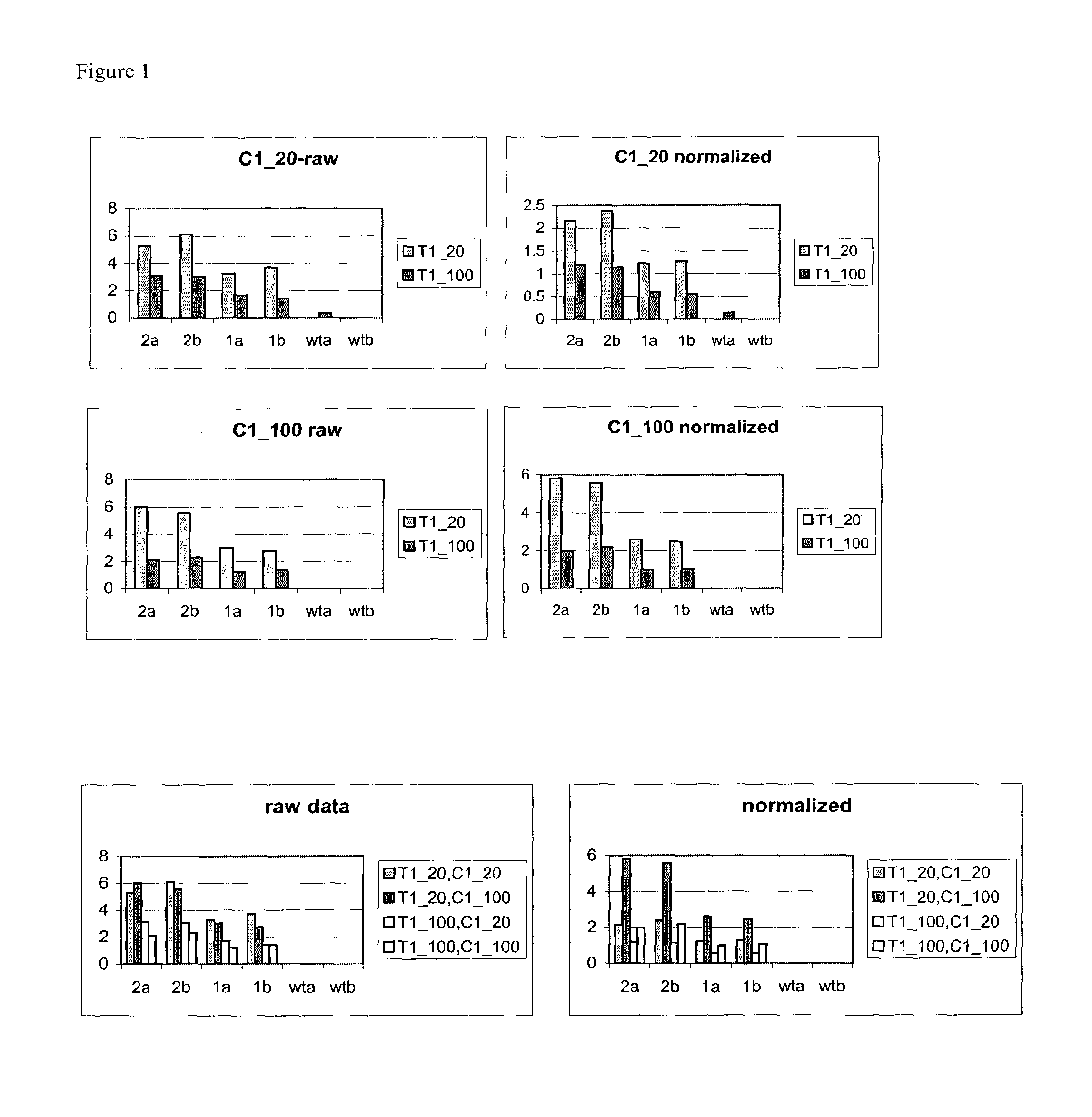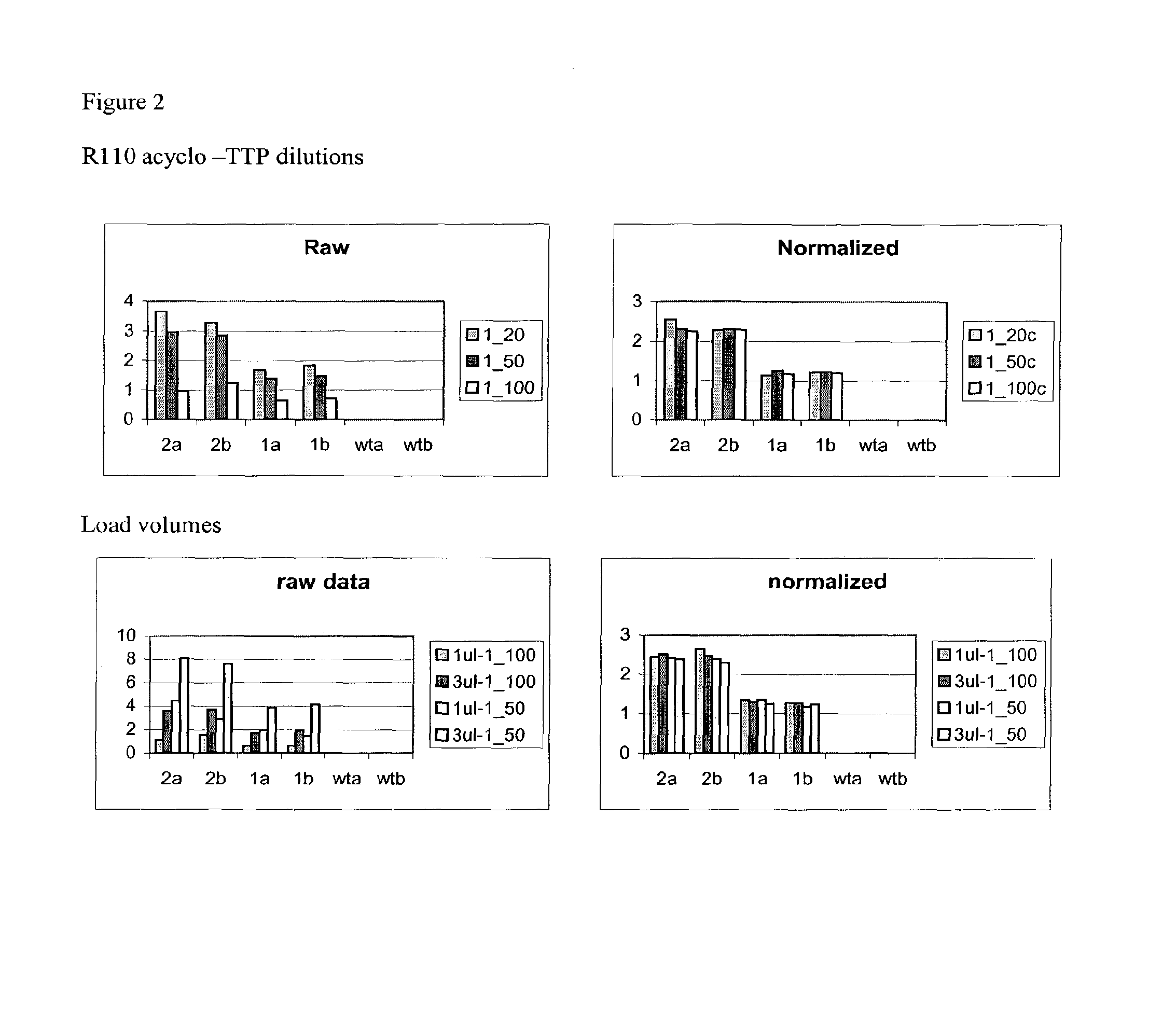Methods for analysis of molecular events
a molecular event and molecular technology, applied in the field of molecular event detection and identification methods, can solve the problem of inefficient extension of nucleotides, and achieve the effect of increasing the specificity of a detection assay
- Summary
- Abstract
- Description
- Claims
- Application Information
AI Technical Summary
Benefits of technology
Problems solved by technology
Method used
Image
Examples
example 1
Variation Detection at Specific Loci
[0065]Experiments were conducted to demonstrate the usefulness of the primer extension invention to detect mutations in the various loci known to be related to colorectal cancer. For example, primer extension protocols were designed using the methods of the invention to detect variants at various loci known to be related to colorectal cancer.
Choosing the Target Region and the Oligonucleotide Primer
[0066]Preferably, a locus associated with a disease such as cancer is chosen. Most preferably, a locus that is known to frequently exhibit one or more mutations, such as deletions or point mutations is chosen. Preferably, a chosen locus comprises a nucleotide in which a mutation is suspected to occur. Once a locus is chosen, primers are designed or chosen to maximize specificity of binding to a nucleotide sequence adjacent to the region suspected of containing a mutation. Particularly useful primers are described in this and the following examples.
Sample...
example 2
Read-Through Primer Extension Protocol
[0079]A typical read-through primer extension reaction is shown as follows:[0080]˜XXXXXXXX-N1-N2*-T (extended primer sequence)[0081]XXXXXXXX-X-X-X (extended product on the template sequence)
In the extended primer, N1 is an unlabeled deoxynucleotide triphosphate, N2* is a labeled deoxynucleotide triphosphate (the identity of this labeled nucleotide is preferably different from the unlabeled nucleotide), T is an unlabeled terminator (e.g. unlabeled dideoxynucleotide triphosphate), and X represents an unspecific nucleotide that is defined by the sequence of the target template sequence to which the primer is designed to hybridize.
[0082]The unspecific nucleotides in the template sequences can be, for example, A, C, G, or T, and the sequence of the primer is designed to hybridize with the template sequence according to standard Watson-Crick base-pairing rules. The unlabeled deoxynucleotide triphosphate, labeled deoxynucleotide triphosphate, and unlab...
example 3
Variation Detection at APC (876)
[0084]Variants or mutants are detected at APC (876) using a primer with a sequence that is shown underlined in the following a APC nucleotide sequence:
[0085]
(SEQ ID NO: 23)ggcaacatgactgtcctttcaccatatttgaatactacagtgttacccagctcctcttcatcaagaggaagcttagatagttctcgttctgaaaaagatagaagtttggagagagaacgcggaattggtctaggcaactaccatccagcaacagaaaatccaggaacttcttcaaagggaggtttgcagatctccaccactgcagcccagattgccaaagtcatggaagaagtgtcagccattcatacctctcaggaagacagaagttctgggtctaccactgaattacattgtgtgacagatgagagaaatgcacttagaagaagctctgctgcccatacacattcaaacacttacaatttcactaagtcggaaaattcaaataggacatgttctatgccttatgccaaattaga
[0086]The following primer and extension product sequences are shown in a 5′ to 3′ orientation. The following nucleic acid primer and nucleotides are added to the extension reaction:[0087]Nucleic Acid Primer (P1):
[0088]
atccaggaacttcttcaaag(SEQ ID NO: 24)[0089]Nucleotides: 1. Unlabeled deoxyguanosine triphosphate (dGTP) (“g”)[0090]2. Labeled dideoxyadenosinc triphosphate (ddA...
PUM
 Login to View More
Login to View More Abstract
Description
Claims
Application Information
 Login to View More
Login to View More - Generate Ideas
- Intellectual Property
- Life Sciences
- Materials
- Tech Scout
- Unparalleled Data Quality
- Higher Quality Content
- 60% Fewer Hallucinations
Browse by: Latest US Patents, China's latest patents, Technical Efficacy Thesaurus, Application Domain, Technology Topic, Popular Technical Reports.
© 2025 PatSnap. All rights reserved.Legal|Privacy policy|Modern Slavery Act Transparency Statement|Sitemap|About US| Contact US: help@patsnap.com


